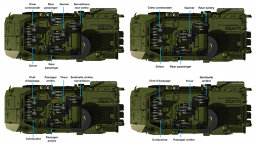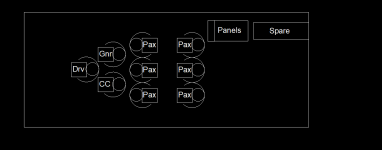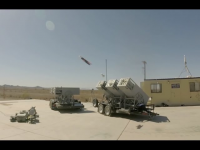- Reaction score
- 7,337
- Points
- 1,160
Honestly, the main flaw of the TAPV IMHO is the lack of internal space. If it had more space to put stuff (whatever that stuff may be), then it would easily find more roles.

I don't think the TAPV lacks interior space. What it does suffer from is one of the world's worst/laziest design teams.
Maintenance Corridor - vacant space
Control Panel on Gunner's left shoulder protruding into cabin space - panels stacked on top of each other
Why isn't that panel tucked into the Maintenance Corridor space. It could still be accessible from the interior.
Despite the Maintenance Corridor the spare is carried on the roof.
Why isn't the spare, perhaps even with a retractable jib, integrated into the maintenance corridor?
The Driver and CC are jammed into the front shoulder to shoulder while the gunner is three miles to the rear hogging the available floor area in what is actually a quite roomy space.
If the Dutch get a crew of three into a Fennek but pushing the driver up front at the apex of the crew triangle while the gunner/cc and the radio operator/obs sit side by side to the rear of the driver.
That Triangle would leave the space to the rear of the crew fully open and well delineated for use as a cargo/pax/auxilliary system area. And the control panel that I suggested could go into the maintenance corridor, could have an alternate home in the centre of the Crew Triangle.
IMHO - somebody just got slack and idle and decided they had a massive space for a small crew and decided that it didn't matter about space utilization and, as I said, allowed the gunner to hog the whole space.
With more thought I think that vehicle could easily be a 3+6 vehicle and with lower profile and centre of mass.
But it would require a ridiculously expensive redesign.



